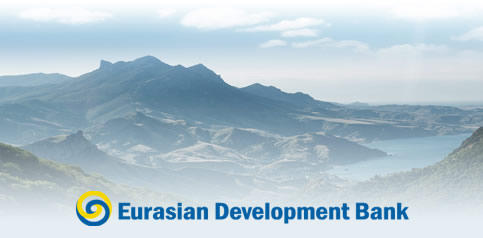EDB confirms failure of economic revolution in Armenia

By Abdul Kerimkhanov
The post-revolutionary Armenian authorities categorically ignore criticism directed at them on various occasions.
The Eurasian Development Bank (EDB) prepared a macroeconomic survey to assess the economic situation in Armenia on November 20. This study, based on data analysis for the first half of 2019, highlights many risks, which are constantly mentioned in media report.
According to the report, the GDP growth in Armenia in 2020 will be lower than in 2019, given the exhaustion of the comparison base that has developed due to the low yield and a decrease in ore production in 2018.
Thus, all statements by Prime Minister Nikol Pashinyan about the "economic revolution", as well as the promise to increase the country's GDP by 15 times by 2050, seem unattainable.
The review reveals that the thesis of the rapid transformation, recovery and diversification of the structure of the Armenian economy is just Pashinyan’s imagination. It is indicated that Armenia saw a decline in mining by 14 percent in 2018.
Now it becomes clear that Pashinyan's coming to power in April-May 2018 and his subsequent rule was accompanied by a fall in agriculture and mining. On this low comparative base, some of the successes of 2019 no longer look so impressive, and this effect would be offset in 2020.
The review says that the reason for the fall in growth indicators in agriculture is the high comparison base for the first half of 2018, while the dynamics became negative in the second half of 2018. In other words, the country's agrarian complex stopped developing after the new forces led by Pashinyan came to power. This negative dynamics in agriculture still persists.
Regarding Pashinyan’s promises of an unprecedented flow of investments into the country after the “velvet revolution”, the EDB’s independent experts note an alarming fact. Gross accumulation made a negative contribution to GDP growth. At the same time, if the growth of investments in fixed assets 10.2 percent in the first quarter was was replaced by a decrease of 0.5 percent in the second quarter.
Supplies of machinery and equipment to the country decreased in conditions of unstable dynamics of investment demand. Pashinyan has recently said that investment goods, envisioning machinery and equipment needed for modernizing the industry and establishing new industries, began to dominate the import structure in Armenia.
The review further says that food prices in June 2019 increased by 4.6 percent compared with a growth of 1.6 percent in December 2018. The acceleration of inflation in this segment is primarily due to the increase in the cost of vegetables (+19.1 percent) due to the low yield of 2018, whose influence on the price level was also observed in the first half of 2019.
Moreover, the balance of income received in Armenia in the form of wages, income from investments and grants declined to $261.9 million in 2019, although a year earlier the amount was $304.9 million.
Thus, does this make Armenians feel better? The answer is obvious.
---
Abdul Kerimkhanov is AzerNews’ staff journalist, follow him on Twitter: @AbdulKerim94
Follow us on Twitter @AzerNewsAz
Here we are to serve you with news right now. It does not cost much, but worth your attention.
Choose to support open, independent, quality journalism and subscribe on a monthly basis.
By subscribing to our online newspaper, you can have full digital access to all news, analysis, and much more.
You can also follow AzerNEWS on Twitter @AzerNewsAz or Facebook @AzerNewsNewspaper
Thank you!
